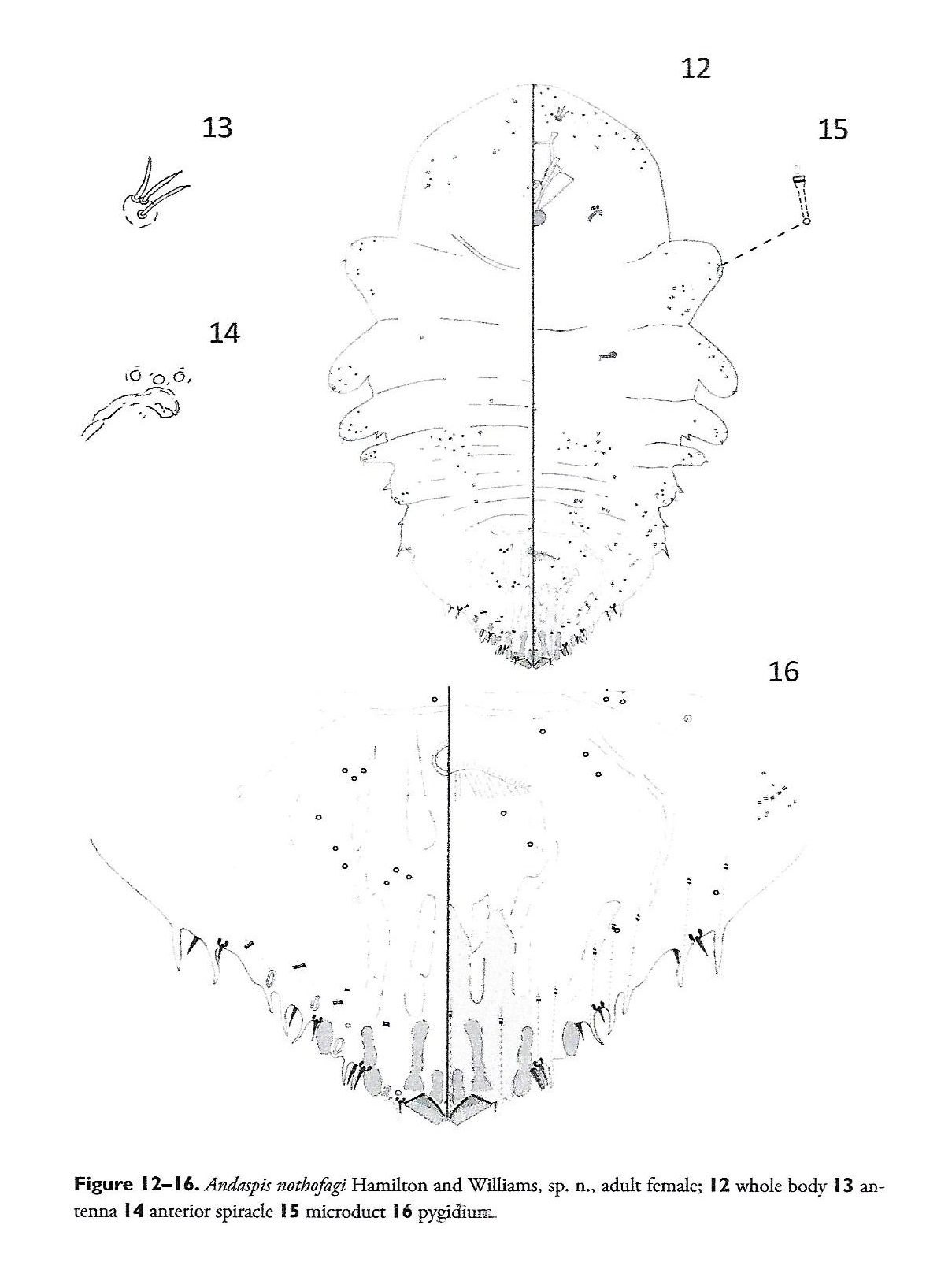Valid Names Results
Andaspis nothofagi Hamilton & Williams, 2017 (Diaspididae: Andaspis)Nomenclatural History
- Andaspis nothofagi Hamilton & Williams 2017: 23-25. Type data: NEW CALEDONIA: Mt. Mou, on Nothofagus baumanii twigs, 11/2/1978, by P.N. Johnson. Holotype, female, by original designation Type depository: London: The Natural History Museum, England, UK; accepted valid name Notes: Paratypes: 5 adult females. Same data as holotype. Deposited at BMNH and NMNH. Illustr.
Common Names
Ecological Associates
Hosts:
Families: 1 | Genera: 1
- Nothofagaceae
- Nothofagus baumanniae | HamiltWiHa2017
Geographic Distribution
Countries: 1
- New Caledonia | HamiltWiHa2017
Keys
- HamiltWiHa2017: pp.30 ( Adult (F) ) [Andaspis from New Caledonia]
Remarks
- Systematics: http://zoobank.org/0073B165-8A89-4163-B2CF-14B3D2DA7629 The adult female of this species is somewhat similar to that of Andaspis laingi Rao, 1952, a species known to occur in India. Adult females of the two species share an oval body shape and four marginal macroducts located on /dorsum. This species differs from A. laingi by the following characters (those for A. laingi in parentheses): well-developed lateral lobes (slightly developed lateral lobes), two scleroses present above each median lobe (one paraphysis above each lobe), and, in addition a short sclerosis present above each second lobe (sclerosis absent and second lobe obsolete), and a short sclerotic area present above each third lobe (sclerotic area abs(ent and third lobe obsolete), also lacking perivulvar pores (three groups of perivulvar pores). (Hamilton, et al., 2017)
- Structure: Slide-mounted adult female 1.15–1.72 mm long; widest at first abdominal segment, 0.64–0.74 mm wide. Body outline oval or oblong, derm membranous except for pygidium. Each antenna with three setae. Anterior spiracles each with 3–5 disc pores, each about 4 μm in diameter, trilocular; posterior spiracles lacking pores. Anterior abdominal segments well-developed with convex margins; tooth-like tubercles present on margins of segments 1, 3, and 4. In addition to those on pygidium, a pair of gland spines along margin of abdominal segment 4 on each side. Many microducts distributed along margins of abdomen, thorax, and head. (Hamilton, et al., 2017)
- General Remarks: Detailed description and illustration in Hamilton, et al., 2017)
Illustrations
Citations
- HamiltWiHa2017: description, diagnosis, distribution, host, host plant, key, taxonomy, 23-25
- NormarOkMo2019: taxonomy, 58



